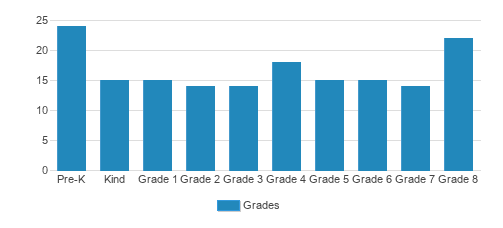Saint Raphael School is committed to quality education, discipline, and christian values, in an atmosphere of mutual respect, support and cooperation.
The religious education program of our school is the center from which all other programs get their beginning, for any Catholic school exists primarily for the religious development of its students in an atmosphere of a faith community.
The students are encouraged to be mindful and caring for the poor, both locally and world wide, through Mission activities and a food pantry.
School Overview
Religious Affiliation
Grades Offered
Grades Prekindergarten-8
Student Body
Total Students
166 students
Student Body Type
Co-ed
% Students of Color
79%
State avg.: 40%
Students by Grade

Academics and Faculty
Total Classroom Teachers
12 teachers
Student-Teacher Ratio
14:1
National avg.: 13:1
Tuition and Acceptance Rate
Admission Deadline
None / Rolling
Source: National Center for Education Statistics (NCES)
Frequently Asked Questions
When is the application deadline for St. Raphael School?
The application deadline for St. Raphael School is rolling (applications are reviewed as they are received year-round).
Recent Articles

Student Success Predictors at Community Colleges
A practical guide to student success predictors at community colleges for private school advisors helping graduates navigate two-year pathways.

Career Pathways with Community College for Private School Grads
Explore top career pathways with community college for private school graduates, including high-demand jobs, transfer options, and 2025 workforce trends.

Navigating the FAFSA & Financial Aid Timeline for Community College
Learn how to navigate FAFSA and financial aid timelines when starting at community college — from application to disbursement in 2025.





